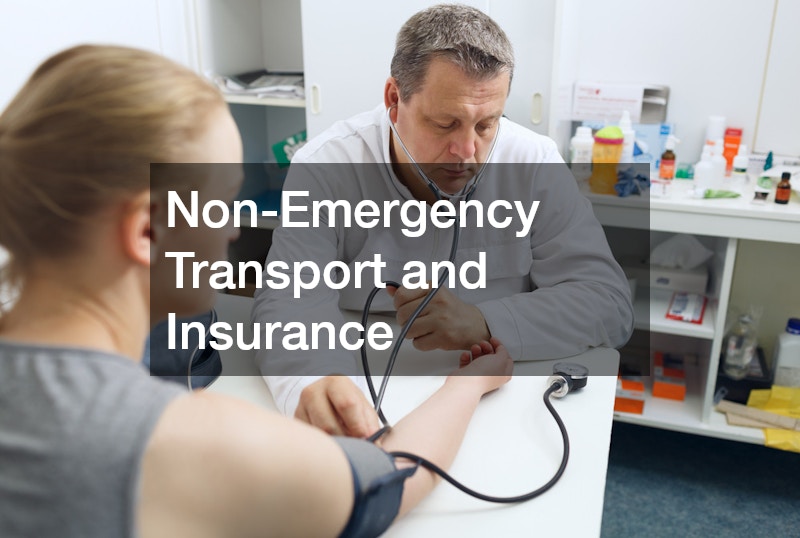In this article, we delve into the vast world of medical transportation services. Understanding the various options available can be crucial for timely and effective patient care. This guide will answer some of the most frequently asked questions about medical transportation.
The Primary Types of Medical Transportation Services
Emergency Medical Services (EMS)
Emergency Medical Services (EMS) represent a crucial component of any healthcare system, offering immediate assistance in urgent situations. These services are often the difference between life and death, as they provide rapid response and on-the-scene care for individuals experiencing life-threatening illnesses or injuries. EMS personnel are trained to stabilize patients during transport, ensuring they reach a healthcare facility as quickly and safely as possible.
The infrastructure for EMS is highly coordinated, relying on advanced communication systems and well-equipped vehicles, such as ambulances and air ambulances. Each unit is staffed by trained professionals, including paramedics and emergency medical technicians, who deliver critical care en route to the hospital. This structure allows EMS to function efficiently, reducing the time between an emergency call and the arrival of help.
The importance of EMS cannot be overstated, especially when considering the crucial role it plays in reducing mortality rates during emergencies. According to the American Heart Association, nearly 90% of out-of-hospital cardiac arrests are fatal, underscoring the need for prompt and effective emergency care. EMS services are continually evolving with technological advancements and improved protocols to meet the demands of growing populations.
Non-Emergency Medical Transportation (NEMT)
Non-Emergency Medical Transportation (NEMT) serves an essential function for individuals who require medical services but do not have access to conventional transportation methods. This includes patients attending routine doctor visits, dialysis appointments, or therapy sessions. NEMT ensures that those without personal vehicles or who are unable to drive due to health reasons can still access necessary healthcare.
NEMT services are tailored to accommodate the specific needs of passengers, often offering specialized vehicles equipped to handle wheelchairs and other mobility aids. Drivers are trained to assist passengers with entering and exiting the vehicle safely, ensuring a seamless and stress-free experience. These services bridge the gap in healthcare accessibility, particularly for elderly individuals and those with disabilities.
Across many regions, NEMT is expanding to include more personalized and efficient options, such as ride-sharing models. These innovations not only increase the availability of NEMT services but also enhance patient satisfaction. The integration of NEMT with health insurance plans further supports its accessibility, allowing more individuals to benefit from this crucial service.
Choosing the Right Medical Transportation Service
Factors to Consider for Emergency Transport
When an emergency arises, choosing the right medical transport service becomes a critical decision. One of the first factors to assess is the urgency of the situation, which will dictate whether immediate on-the-scene medical attention is necessary. Ensuring that an ambulance service is properly certified and has a record of rapid response times is equally important.
Additional considerations include the level of training and expertise of the medical staff accompanying the transport. Patients should be transported by adequately staffed units equipped to handle the specific medical needs they present. Furthermore, proximity to the nearest equipped hospital and the ability of the transport service to communicate effectively with receiving medical teams can drastically influence outcomes.
Evaluating Non-Emergency Options
Evaluating non-emergency medical transportation options involves assessing both the service provider and the specific requirements of the patient. It is crucial to verify that the service can accommodate the patient’s medical and mobility needs, such as wheelchair access or specialized medical equipment. Furthermore, understanding the provider’s operating hours and flexibility is vital for scheduling regular visits or adjusting for unexpected delays.
Another important factor is the cost of service and whether it is covered by insurance. Many insurance plans offer coverage for NEMT, but this can vary widely, and understanding one’s policy helps in avoiding unexpected expenses. When insurance does not cover the service, exploring community resources or organizations that provide subsidized transport options may be beneficial.
Are Medical Transportation Services Covered by Insurance?
Insurance Coverage for Emergency Services
Insurance coverage for emergency medical transportation services often varies by provider and geographic location. Typically, essential emergency services, like ambulance transport, are covered by most comprehensive health insurance plans. However, it’s crucial for policyholders to understand the specifics of their coverage, including any potential out-of-pocket expenses or deductibles.
Coverage discrepancies can occur, especially between those holding private insurance plans and individuals covered by governmental programs like Medicare or Medicaid. While these programs generally offer coverage for emergency services, there may be instances where prior authorization is required for transport by air ambulance services. Additionally, coverage can depend on whether the transportation services are considered in-network or out-of-network.
Non-Emergency Transport and Insurance
Non-emergency medical transportation services present a unique area where insurance policies can vary significantly. While some health insurance plans include NEMT coverage, others may require supplemental coverage for these services. Patients can often utilize NEMT for essentials such as chronic illness management and accessing frequent outpatient services.
For those not covered by insurance, there are other ways to manage costs, including seeking services through state-run programs or community organizations. Some regions provide vouchers or reimbursements for eligible individuals, reducing the economic burden. Early discussions with insurers can clarify what aspect of services might be covered under current plans and help plan expenses accordingly.
Medical transportation plays a pivotal role in patient care. By understanding the different types and knowing how to choose the appropriate service, patients and their families can ensure timely and effective medical treatment. Armed with this knowledge, you’re better prepared to make informed decisions about medical transportation services.
